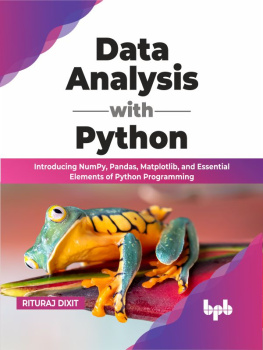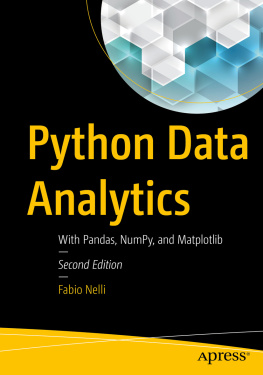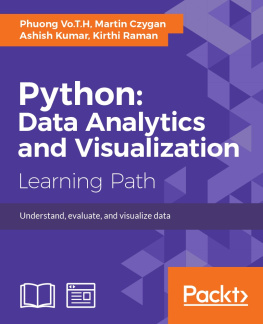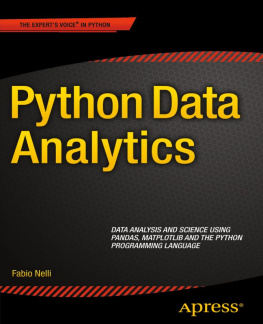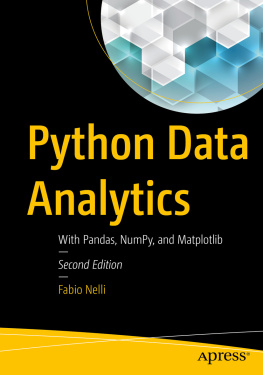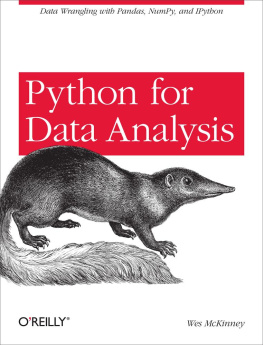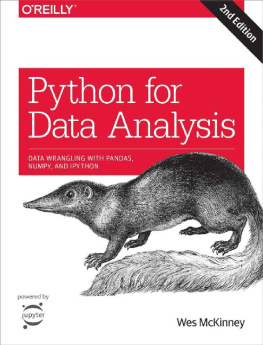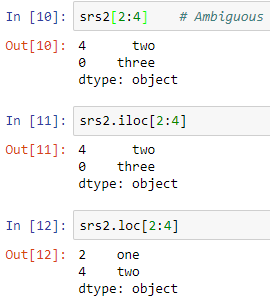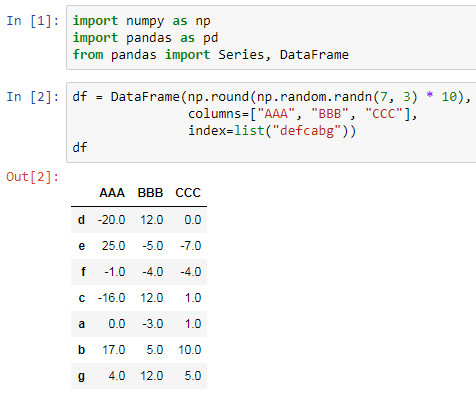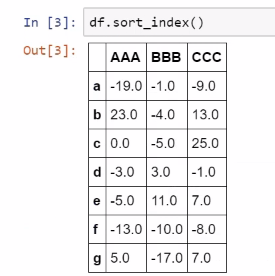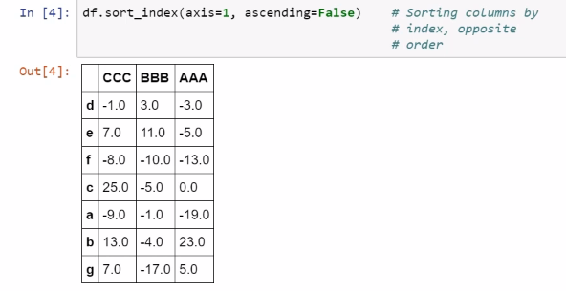Curtis Miller [Curtis Miller] - Hands-On Data Analysis with NumPy and pandas
Here you can read online Curtis Miller [Curtis Miller] - Hands-On Data Analysis with NumPy and pandas full text of the book (entire story) in english for free. Download pdf and epub, get meaning, cover and reviews about this ebook. year: 2018, publisher: Packt Publishing, genre: Home and family. Description of the work, (preface) as well as reviews are available. Best literature library LitArk.com created for fans of good reading and offers a wide selection of genres:
Romance novel
Science fiction
Adventure
Detective
Science
History
Home and family
Prose
Art
Politics
Computer
Non-fiction
Religion
Business
Children
Humor
Choose a favorite category and find really read worthwhile books. Enjoy immersion in the world of imagination, feel the emotions of the characters or learn something new for yourself, make an fascinating discovery.
- Book:Hands-On Data Analysis with NumPy and pandas
- Author:
- Publisher:Packt Publishing
- Genre:
- Year:2018
- Rating:3 / 5
- Favourites:Add to favourites
- Your mark:
Hands-On Data Analysis with NumPy and pandas: summary, description and annotation
We offer to read an annotation, description, summary or preface (depends on what the author of the book "Hands-On Data Analysis with NumPy and pandas" wrote himself). If you haven't found the necessary information about the book — write in the comments, we will try to find it.
Get to grips with the most popular Python packages that make data analysis possible
About This Book- Explore the tools you need to become a data analyst
- Discover practical examples to help you grasp data processing concepts
- Walk through hierarchical indexing and grouping for data analysis
Hands-On Data Analysis with NumPy and Pandas is for you if you are a Python developer and want to take your first steps into the world of data analysis. No previous experience of data analysis is required to enjoy this book.
What You Will Learn- Understand how to install and manage Anaconda
- Read, sort, and map data using NumPy and pandas
- Find out how to create and slice data arrays using NumPy
- Discover how to subset your DataFrames using pandas
- Handle missing data in a pandas DataFrame
- Explore hierarchical indexing and plotting with pandas
Python, a multi-paradigm programming language, has become the language of choice for data scientists for visualization, data analysis, and machine learning.
Hands-On Data Analysis with NumPy and Pandas starts by guiding you in setting up the right environment for data analysis with Python, along with helping you install the correct Python distribution. In addition to this, you will work with the Jupyter notebook and set up a database. Once you have covered Jupyter, you will dig deep into Pythons NumPy package, a powerful extension with advanced mathematical functions. You will then move on to creating NumPy arrays and employing different array methods and functions. You will explore Pythons pandas extension which will help you get to grips with data mining and learn to subset your data. Last but not the least you will grasp how to manage your datasets by sorting and ranking them.
By the end of this book, you will have learned to index and group your data for sophisticated data analysis and manipulation.
Style and approachA step-by-step approach, taking you through the different concepts and features of Data Analysis using Python libraries and tools.
Downloading the example code for this book You can download the example code files for all Packt books you have purchased from your account at http://www.PacktPub.com. If you purchased this book elsewhere, you can visit http://www.PacktPub.com/support and register to have the files e-mailed directly to you.
Curtis Miller [Curtis Miller]: author's other books
Who wrote Hands-On Data Analysis with NumPy and pandas? Find out the surname, the name of the author of the book and a list of all author's works by series.

![Curtis Miller [Curtis Miller] Hands-On Data Analysis with NumPy and pandas](/uploads/posts/book/119333/thumbs/curtis-miller-curtis-miller-hands-on-data.jpg)
